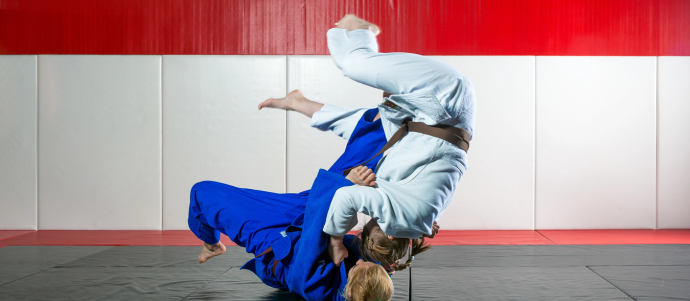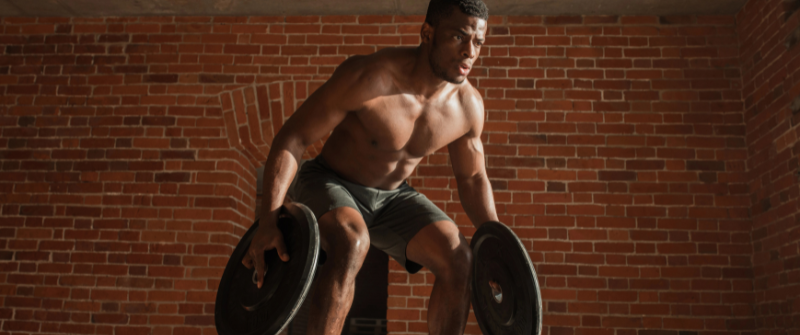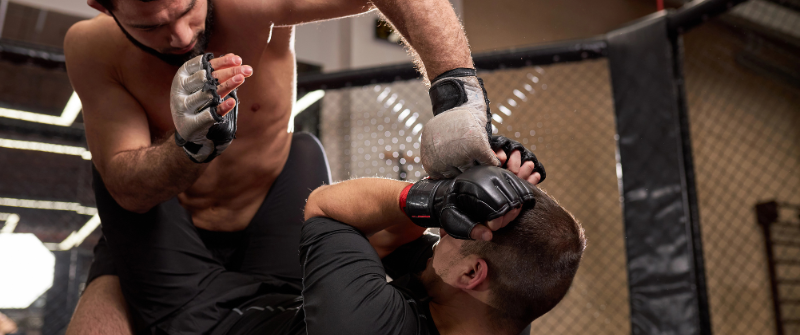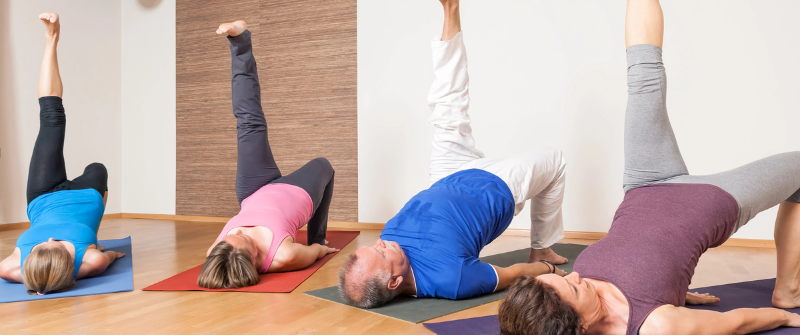
- by NEXO Team
- July 25, 2024
BJJ studio workers’ compensation coverage is a necessity to ensure the well-being of instructors, students, staff, and the studio. Workers’ compensation claims can be a significant financial burden on Brazilian Jiu-Jitsu studios and are a common reason for high martial arts studio insurance premiums. Implementing robust safety practices can help reduce the incidence of injuries, create a safer training environment, and consequently improve workers’ compensation outcomes.
Continue reading to learn how the following safety practices can enhance your martial arts studio’s workers’ compensation insurance protection.
Proper Instruction and Supervision
Qualified instructors are paramount in ensuring the safety of all participants. Martial arts instructors should have appropriate certifications and substantial Brazilian Jiu-Jitsu experience. Knowledge of first aid is crucial for promptly addressing injuries. Instructors should monitor students closely, correct improper techniques, and prevent dangerous situations.
Instructors must also emphasize the importance of discipline, respect, and controlled practice, ensuring that students understand the boundaries between training and real combat.
Also Read: How Workers’ Compensation Insurance Protects Martial Arts Studios
1. Gradual Progression and Skill Development
BJJ training should follow a structured progression to allow students to build their skills gradually. Dividing classes into beginner, intermediate, and advanced levels ensures students practice techniques appropriate to their experience. Beginners should start with light contact and progressively move to more intense sparring as they develop control and technique. Gradually increasing the intensity of drills and sparring sessions to prevent overexertion and injuries.
2. Use of Protective Gear
Using protective gear like mouthguards, ear guards, and knee pads significantly enhances workers' compensation protection by preventing common injuries. This proactive approach reduces the frequency and severity of injuries, leading to fewer martial arts studio insurance workers’ compensation claims and lower premiums. Ensuring all practitioners wear appropriate protective gear fosters a safer training environment, ultimately benefiting the gym, its instructors, and its members by promoting health and reducing financial burdens associated with workplace injuries.
3. Safe Training Environment
A safe training environment is crucial. This includes using high-quality mats to prevent injuries, maintaining cleanliness to avoid infections, and ensuring adequate space to prevent collisions. Regular equipment checks and a well-organized training area minimize risks. By fostering a safe environment, martial arts gyms can reduce injury-related insurance claims, lower martial arts studio workers’ compensation premiums, and create a secure, healthy atmosphere for both instructors and students, ultimately improving overall workers' compensation outcomes.
Also Read: The Importance of General Liability Insurance for Jiu-Jitsu Facilities
4. Emphasis on Technique Over Strength
 Proper technique ensures controlled movements and prevents muscle strains, joint injuries, and other common training accidents while reducing injuries. Instructors should prioritize teaching precise, efficient techniques, encouraging students to focus on skill rather than force. This approach minimizes the likelihood of injuries, leading to fewer Jiu-Jitsu workers’ compensation insurance claims, lower premiums, and a safer training environment for both instructors and students.
Proper technique ensures controlled movements and prevents muscle strains, joint injuries, and other common training accidents while reducing injuries. Instructors should prioritize teaching precise, efficient techniques, encouraging students to focus on skill rather than force. This approach minimizes the likelihood of injuries, leading to fewer Jiu-Jitsu workers’ compensation insurance claims, lower premiums, and a safer training environment for both instructors and students.
5. Addressing Individual Needs and Limitations
Addressing individual needs and limitations is vital for enhancing workers' compensation protections in martial arts gyms. Assessing participants' fitness levels and modifying techniques accordingly reduces the risk of injuries. Encouraging open communication allows for adjustments based on health concerns or physical limitations, fostering a safer training environment. By tailoring instruction to individual capabilities and promoting inclusivity, gyms can minimize accidents and promote overall well-being.
Also Read: The Importance of General Liability Insurance for Jiu-Jitsu Facilities
6. Emergency Procedures and First Aid
Establishing clear emergency procedures and maintaining robust first aid protocols is crucial for enhancing workers' compensation in martial arts gyms. Having well-trained staff, accessible first aid kits, and emergency contact information readily available ensures swift response to injuries or medical emergencies. Prompt and effective care not only minimizes the severity of injuries but also demonstrates a commitment to safety and responsible management. This proactive approach helps reduce insurance claims, lower premiums, and promote a safer environment for all gym participants.
7. Legal and Ethical Considerations
Adhering to legal and ethical standards is crucial for enhancing workers' compensation in Jiu-Jitsu. This includes ensuring all participants sign liability waivers, maintaining adequate martial arts studio workers’ compensation coverage, and upholding professional conduct. Following safety protocols, reporting injuries promptly, and providing proper documentation are essential. By prioritizing legal compensation and ethical practices, gyms demonstrate their commitment to safety and responsibility. This fosters a safer environment, reduces insurance risks, and promotes better workers' compensation outcomes for instructors and students alike.
Also Read: Reducing Jiu-Jitsu Studios Insurance Costs With Better Risk Management
8. Reporting and Documentation
Thorough reporting and documentation are essential for enhancing workers' compensation in Jiu-Jitsu gyms. Promptly documenting injuries, incidents, and near-misses allows for better analysis and risk management. This data helps gyms identify trends, implement preventive measures, and improve safety protocols. Clear and detailed records also support insurance claims, demonstrating proactive management and adherence to safety standards. By maintaining compensation documentation, gyms can mitigate risks, reduce insurance premiums, and foster a safer training environment for all participants.
9. Maintaining Excellence
Continuous improvement is key to enhancing workers' compensation for martial arts gyms. Regularly updating safety protocols, training staff on new techniques, and soliciting feedback from participants foster a culture of safety. Analyzing incident reports and implementing preventive measures based on findings reduces the likelihood of injuries. By striving for excellence in safety practices and staying proactive, gyms can mitigate risks, lower insurance costs, and create a safer environment that supports better workers' compensation outcomes for all involved.
Conclusion
Improving Jiu-Jitsu workers' compensation protections through safety practices is not only beneficial for reducing injuries and associated costs but also for creating a positive and supportive training environment. By focusing on the strategies above, Brazilian Jiu-Jitsu schools can significantly enhance safety and mitigate the risks associated with training while lowering martial arts studio workers’ compensation insurance costs.
Contact NEXO for a policy review and to learn about our martial arts studio insurance options.
Categories
Fill out a short form to contact us with your questions or to receive a customized quote.
Recent Posts
-
 NEXO’s Affinity Program: How Fitness Suppliers and Associations Can Partner for Profit and Protection
December 5, 2025
NEXO’s Affinity Program: How Fitness Suppliers and Associations Can Partner for Profit and Protection
December 5, 2025 -
%20(1).png) How to Insure an MMA Gym Without Paying for Coverage You Don’t Need
December 5, 2025
How to Insure an MMA Gym Without Paying for Coverage You Don’t Need
December 5, 2025 -
 Mastering Liability for Jiu-Jitsu Tournaments and Martial Arts Events
December 5, 2025
Mastering Liability for Jiu-Jitsu Tournaments and Martial Arts Events
December 5, 2025 -
 From Zen to Zoning: What Every Yoga and Pilates Studio Owner Should Know Before Signing a Lease
December 5, 2025
From Zen to Zoning: What Every Yoga and Pilates Studio Owner Should Know Before Signing a Lease
December 5, 2025 -
%20(1).png) Why Your Referral & Loyalty Program Can Impact Your Insurance Rates
December 5, 2025
Why Your Referral & Loyalty Program Can Impact Your Insurance Rates
December 5, 2025

